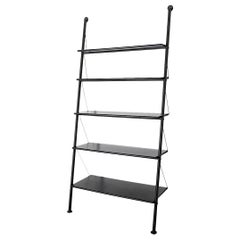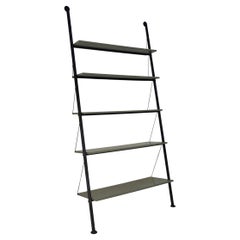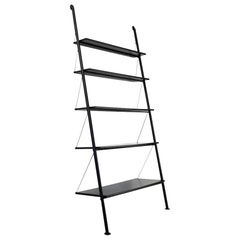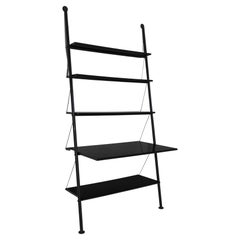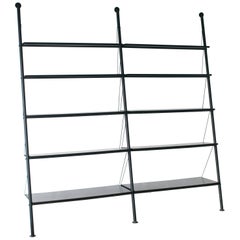John Ild
Vintage 1970s Italian Post-Modern Bookcases
Metal
Vintage 1970s Spanish Post-Modern Shelves
Steel
Vintage 1980s French Post-Modern Bookcases
Metal
Recent Sales
Antique 1890s French Post-Modern Shelves and Wall Cabinets
Metal
Vintage 1970s Spanish Minimalist Shelves
Steel
Late 20th Century French Bookcases
Metal
Late 20th Century French Bookcases
Metal
Vintage 1970s French Post-Modern Shelves
Metal
Vintage 1970s Italian Mid-Century Modern Bookcases
Metal
Vintage 1970s Italian Mid-Century Modern Bookcases
Metal
Vintage 1980s French Post-Modern Shelves and Wall Cabinets
Metal
People Also Browsed
Antique Early 1900s American Arts and Crafts Bookcases
Oak
2010s Brazilian Organic Modern Armchairs
Wicker
2010s South African Minimalist Pedestals
Burl, Poplar, Wood
21st Century and Contemporary Brazilian Modern Dining Room Chairs
Wood
Vintage 1950s American Folk Art Carnival Art
Canvas
Vintage 1940s Italian Art Deco Chandeliers and Pendants
Brass
2010s Italian Modern Chaise Longues
Wood
21st Century and Contemporary British Organic Modern Wall Lights and Sco...
Plaster
2010s South African Modern Chairs
Steel
Mid-20th Century English Country Doors and Gates
Metal, Iron, Wrought Iron
2010s American Mid-Century Modern Credenzas
Walnut
21st Century and Contemporary Italian Modern Chandeliers and Pendants
Crystal
Vintage 1970s American Mid-Century Modern Cabinets
Chrome
Vintage 1950s Italian Mid-Century Modern Bookcases
Brass
Vintage 1950s Italian Mid-Century Modern Coat Racks and Stands
Brass
2010s Bosnian Mid-Century Modern Daybeds
Fabric, Beech, Velvet
Philippe Starck for sale on 1stDibs
A ubiquitous name in the world of contemporary architecture and design, Philippe Starck has created everything from hotel interiors and luxury yachts to toothbrushes and teakettles. Yet for every project in his diverse portfolio, Starck has maintained an instantly recognizable signature style: a look that is dynamic, sleek, fluid and witty.
The son of an aircraft engineer, Starck studied interior design at the École Nissim de Camondo in Paris. He started his design career in the 1970s decorating nightclubs in the city, and his reputation for spirited and original interiors earned him a commission in 1983 from French president François Mitterrand to design the private apartments of the Élysée Palace. Starck made his name internationally in 1988 with his design for the interiors of the Royalton Hotel in New York, a strikingly novel environment featuring jewel-toned carpeting and upholstery and furnishings with organically shaped cast-aluminum frames. He followed that up in 1990 with an equally impressive redesign of the Paramount Hotel in Manhattan, a project that featured over-scaled furniture as well as headboards that mimicked Old Masters paintings.
Like their designer, furniture pieces by Starck seem to enjoy attention. Designs such as the wedge-shaped J Series club chair; the sweeping molded-mahogany Costes chair; the provocative Ara table lamp; or the sinuous WW stool never fail to raise eyebrows. Other Starck pieces make winking postmodern references to historical designs. His polycarbonate Louis Ghost armchair puts a new twist on Louis XVI furniture; his Out-In chair offers a futuristic take on the classic English high-back chair. But for all his flair, Starck maintains a populist vision of design. While one of his limited-edition Prince de Fribourg et Treyer armchairs might be priced at $7,000, a plastic Starck chair for the Italian firm Kartell is available for around $250. As you will see on 1stDibs, Philippe Starck’s furniture makes a bold statement — and it can add a welcome bit of humor to even the most traditional decor.
Finding the Right Case Pieces And Storage Cabinets for You
Of all the vintage storage cabinets and antique case pieces that have become popular in modern interiors over the years, dressers, credenzas and cabinets have long been home staples, perfect for routine storage or protection of personal items.
In the mid-19th century, cabinetmakers would mimic styles originating in the Louis XIV, Louis XV and Louis XVI eras for their dressers, bookshelves and other structures, and, later, simpler, streamlined wood designs allowed these “case pieces” or “case goods” — any furnishing that is unupholstered and has some semblance of a storage component — to blend into the background of any interior.
Mid-century modern furniture enthusiasts will cite the tall modular wall units crafted in teak and other sought-after woods of the era by the likes of George Nelson, Poul Cadovius and Finn Juhl. For these highly customizable furnishings, designers of the day delivered an alternative to big, heavy bookcases by considering the use of space — and, in particular, walls — in new and innovative ways. Mid-century modern credenzas, which, long and low, evolved from tables that were built as early as the 14th century in Italy, typically have no legs or very short legs and have grown in popularity as an alluring storage option over time.
Although the name immediately invokes images of clothing, dressers were initially created in Europe for a much different purpose. This furnishing was initially a flat-surfaced, low-profile side table equipped with a few drawers — a common fixture used to dress and prepare meats in English kitchens throughout the Tudor period. The drawers served as perfect utensil storage. It wasn’t until the design made its way to North America that it became enlarged and equipped with enough space to hold clothing and cosmetics. The very history of case pieces is a testament to their versatility and well-earned place in any room.
In the spirit of positioning your case goods center stage, decluttering can now be design-minded.
A contemporary case piece with open shelving and painted wood details can prove functional as a storage unit as easily as it can a room divider. Alternatively, apothecary cabinets are charming case goods similar in size to early dressers or commodes but with uniquely sized shelving and (often numerous) drawers.
Whether you’re seeking a playful sideboard that features colored glass and metal details, an antique Italian hand-carved storage cabinet or a glass-door vitrine to store and show off your collectibles, there are options for you on 1stDibs.
